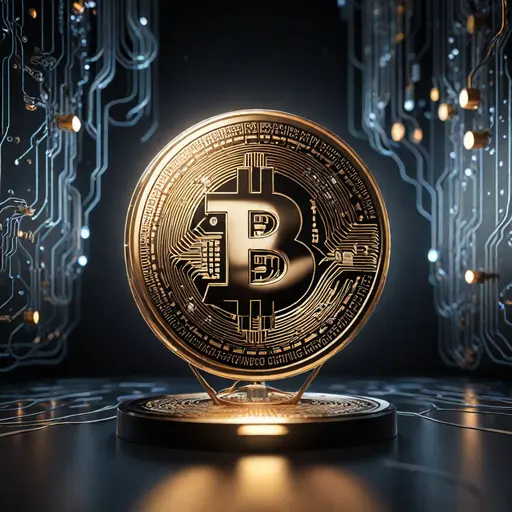
The financial landscape is undergoing a seismic shift, driven by the rise of decentralization and innovative technologies like blockchain. At the forefront of this transformation are decentralized payment systems, which are redefining how individuals and businesses conduct transactions. These systems leverage distributed networks to eliminate intermediaries, offering unparalleled transparency, security, and efficiency. In this article, we’ll explore what decentralized payment systems are, their key advantages, potential drawbacks, and why platforms like DNS-PAY are leading the charge in providing safe and reliable global payment solutions.
What Is a Decentralized Payment System?
A decentralized payment system operates on a peer-to-peer (P2P) model, enabling users to send and receive funds directly without relying on intermediaries such as banks or traditional financial institutions. Unlike centralized systems, where a single authority controls all transactions, decentralized systems distribute control across a vast network of nodes. This ensures no single point of failure and enhances the resilience of the entire network.
At the heart of these systems lies blockchain technology, a distributed ledger that records every transaction in a transparent and immutable manner. Each transaction is verified by multiple participants in the network, ensuring accuracy and preventing fraud. Smart contracts—self-executing agreements coded into the blockchain —further streamline processes by automating tasks like fund transfers and settlements.
One of the most prominent examples of a decentralized payment system is Bitcoin, the first cryptocurrency to gain widespread adoption. Bitcoin demonstrated the potential of decentralization by enabling borderless transactions without the need for intermediaries. Since then, numerous other blockchain -based networks have emerged, each offering unique features and capabilities.
Decentralized payment systems are particularly appealing to businesses operating globally. By leveraging these networks, companies can bypass currency conversion fees, reduce processing times, and access underserved markets. Platforms like DNS-PAY are at the forefront of integrating decentralized solutions into mainstream commerce, making it easier than ever for businesses to adopt this transformative technology.
What Pros Can Decentralized Payment Systems Offer?
The benefits of using decentralized payment systems are vast and varied, addressing many of the inefficiencies inherent in traditional financial networks . Below, we’ll explore the top advantages that make these systems an attractive choice for individuals and businesses alike.
- Enhanced Security Through Decentralization
One of the most significant advantages of decentralized payment systems is their robust security framework. Traditional financial networks rely on centralized servers, which are vulnerable to hacking and cyberattacks. In contrast, decentralized networks distribute data across thousands—or even millions—of nodes, making it nearly impossible for malicious actors to compromise the system.
The use of cryptographic algorithms in blockchain technology further strengthens security. Every transaction is encrypted and linked to the previous one, creating an unalterable chain of records. This ensures that once a transaction is confirmed, it cannot be tampered with or reversed. For businesses handling sensitive financial data, this level of security is invaluable. - Lower Transaction Costs
Traditional payment methods often involve multiple intermediaries, such as banks , payment processors, and clearinghouses. Each intermediary charges a fee, which can add up significantly, especially for cross-border transactions . Decentralized payment systems eliminate the need for these middlemen, drastically reducing costs.
For example, sending money internationally through a traditional bank can incur fees ranging from 5% to 10% of the total amount. In contrast, decentralized networks allow users to transfer funds at a fraction of the cost, sometimes as low as a few cents per transaction. This makes them an ideal solution for businesses looking to optimize their financial operations. - Faster Transaction Processing
Speed is another critical advantage of decentralized payment systems. Traditional transactions, especially international ones, can take several days to settle due to the involvement of multiple parties. Decentralized networks, on the other hand, process transactions almost instantly.
This speed is made possible by the absence of intermediaries and the efficiency of blockchain technology. For instance, a transaction conducted on the Bitcoin network typically takes around 10 minutes to confirm, while newer blockchain protocols can process transactions in seconds. This rapid processing time is particularly beneficial for businesses requiring real-time payments. - Global Accessibility and Financial Inclusion
Decentralized payment systems are inherently inclusive, as they do not require users to meet stringent criteria such as having a bank account or meeting credit score requirements. All that’s needed is an internet connection and access to a digital wallet.
This accessibility is a game-changer for the billions of people worldwide who remain unbanked or underbanked. By leveraging decentralized networks, individuals in remote or underserved regions can participate in the global economy. Businesses, too, can tap into new markets and expand their customer base without worrying about geographic limitations. - Transparency and Trust
Transparency is a cornerstone of decentralized payment systems. Every transaction is recorded on a public ledger, visible to all participants in the network. This openness fosters trust among users, as they can independently verify the authenticity of transactions.
In contrast, centralized systems operate behind closed doors, leaving users reliant on the integrity of the controlling entity. With decentralization, there is no need to place blind faith in intermediaries, as the blockchain provides an immutable record of all activities. - Resistance to Censorship
Another compelling benefit of decentralized payment systems is their resistance to censorship. Centralized entities, such as banks, have the authority to freeze accounts, block transactions, or impose restrictions based on arbitrary criteria. This can leave users vulnerable to unfair practices.
Decentralized networks, however, operate autonomously and cannot be controlled by any single entity. This ensures that users retain full control over their funds and can conduct transactions freely, regardless of external pressures. - Innovation and Flexibility
The open nature of blockchain technology encourages innovation and flexibility. Developers can build decentralized applications (dApps) on top of existing networks , creating new tools and services that enhance the functionality of payment systems. For example, smart contracts enable automated payments, escrow services, and conditional fund releases, streamlining complex financial processes.
Businesses adopting decentralized payment systems can leverage these innovations to improve operational efficiency and deliver better customer experiences.

What About the Setbacks?
While the benefits of decentralized payment systems are undeniable, it’s important to acknowledge the challenges and limitations associated with this technology. Understanding these setbacks will help users make informed decisions and mitigate potential risks.
- Volatility of Cryptocurrencies
Many decentralized payment systems rely on cryptocurrencies like Bitcoin for conducting transactions. While these digital assets offer numerous advantages, they are also highly volatile. Price fluctuations can pose risks for both merchants and consumers, as the value of a transaction may change significantly between initiation and completion.
To address this issue, stablecoins—cryptocurrencies pegged to stable assets like fiat currencies—have emerged as a viable alternative. However, widespread adoption of stablecoins is still in its early stages. - Regulatory Uncertainty
Governments and regulatory bodies around the world are grappling with how to regulate decentralized payment systems. While some countries have embraced blockchain technology, others have imposed strict restrictions or outright bans. This regulatory uncertainty creates challenges for businesses seeking compliance and long-term stability. - Scalability Issues
As decentralized networks grow in popularity, scalability becomes a concern. Popular blockchain protocols, such as Bitcoin and Ethereum, have faced congestion during peak usage periods, leading to slower processing times and higher fees. Although advancements like layer-2 solutions and sharding aim to address these issues, scalability remains a work in progress. - Technical Complexity
For non-technical users, navigating decentralized payment systems can be daunting. Setting up digital wallets, managing private keys, and understanding gas fees require a learning curve that may deter some individuals and businesses. Simplifying the user experience is crucial for driving mainstream adoption.
The rise of decentralized payment systems represents a monumental leap forward in the evolution of finance. By harnessing the power of blockchain technology and embracing the principles of decentralization, these systems offer unparalleled security, efficiency, and inclusivity. From lower transaction costs to global accessibility, the benefits are clear and compelling.
However, it’s essential to approach this technology with a balanced perspective, acknowledging both its strengths and limitations. As the ecosystem continues to mature, innovations and regulatory frameworks will likely address many of the current challenges, paving the way for broader adoption. In any case, safe platforms such as DNS-PAY provide us all DeFi benefits we should ask for.